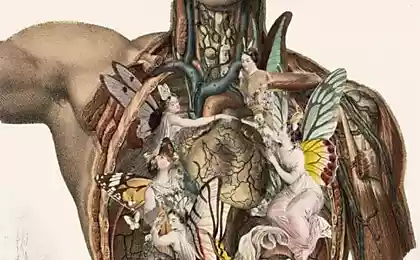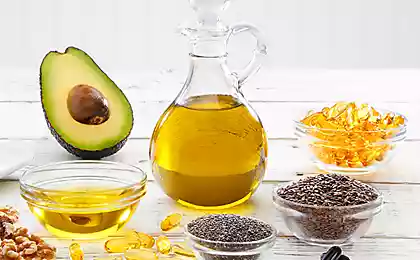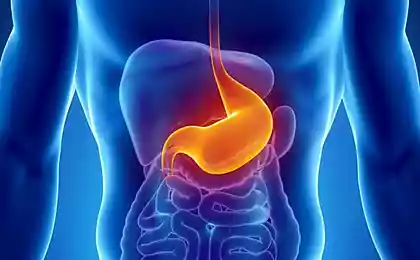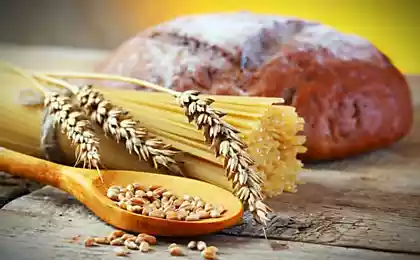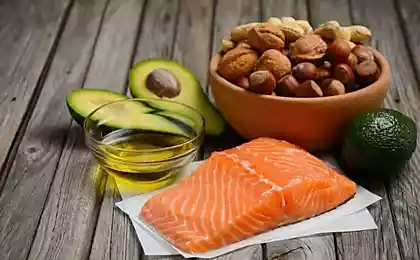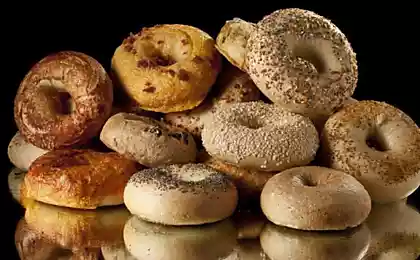620
How to read a cholesterol test
Doctor measuring cholesterolactually checks several different indicators. Here is what they stand for (values in parentheses correspond to the new international system).
Total cholesterol. This includes all the different types of cholesterol, put together, and this indicator measures the risk of a heart attack.
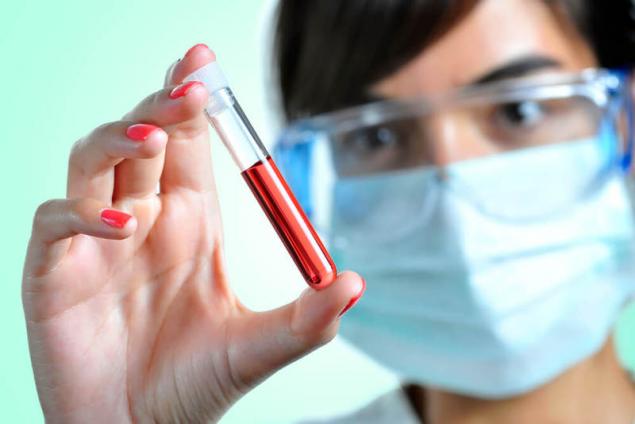
If the cholesterol level is:
– 150 mg/DL (3.9 mmol/l) or less, the risk of heart attack is very low;
– about 200 mg/DL (5.2 mmol/l) – the risk of a heart attack average;
– above 240 mg/DL (6.2 mmol/l) – risk of heart attack large.
The high density lipoprotein (HDL). It is sometimes called "good cholesterol" because it brings cholesterol from the body. The higher the HDL, the better.
To evaluate the levels of HDL, divide it by total cholesterol, and then multiply by 100 (this shows what percentage of the total cholesterol consists of HDL). Result:
– 30% or more risk of heart problems is very small;
– about 20% of the average risk;
– less than 20% of the risk above the average level.
For example, assume that total cholesterol 200 and HDL of 50. Dividing 50 by 200, we get 0,25. Multiplying the result by 100 we get the figure of 25%. Not very good, but better than average US citizens. The value is the ratio of HDL and total cholesterol.
Triglycerides. It is the particles of fat floating in the bloodstream. If the level exceeds 200 mg/DL it is considered high.
The doctor may also measure the low density lipoprotein (LDL) and lipoprotein very low density, but usually these values are not interpreted separately from total cholesterol, HDL and triglycerides.
How to use science in practice
Below we give recommendations on how to reduce cholesterol, keep it low and if You have clogged arteries is to provide them with the best opportunities for purification. Use these guidelines along with your physician's advice about diet and other therapies that may suit You.

1. Build your menu according to the four new food groups:
– whole grains such as brown rice, whole grain pasta, bread, oatmeal, cereals;
– legumes such as beans, peas, lentils;
– a variety of vegetables: broccoli, carrots, cauliflower, spinach, sweet potatoes, Swiss chard, etc.;
– fruits like apples, bananas, grapefruit, oranges, pears, strawberries, watermelons.
2. Avoid all animal products. Even chicken and fish contain fat and cholesterol, but they lack the fiber necessary for health. Ideal food for reducing cholesterol level involves a complete rejection of them.
3. Reduce the consumption of vegetable oils to a minimum. Liquid vegetable oils are better than animal fats but they still contain traces of saturated fat. Tropical oils (palm, palm kernel and coconut) saturated fats a lot. And don't use products that are made with partially or fully hydrogenated fats (you can easily find them if you read the composition of the product) because they raise cholesterol.
4. For nutrition, it is important to have a source of vitamin B12. It could be any multivitamin, enriched soy milk or cereals, or vitamin B12.
Follow these tips in the kitchen is not difficult. The most familiar and basic products meet the requirements of salads and baked beans to mashed potatoes, baked potatoes, almost all vegetables and fruits, or try vegetable lasagna, rice pilaf, spaghetti with tomato sauce, bean burritos from.
If You want to use the meat substitutes, which appeared in stores in recent years, You will find vegiburger, soy sausages, meat for sandwiches with taste the "original" version.
When choosing restaurants, look for international cuisine. Italian, Chinese, Mexican, Thai and many other cuisines offer a wide selection of healthy vegetarian dishes.
To introduce regular physical activity into daily routine is very simple. To reverse cardiovascular disease only need half-hour walk every day or hour walk three times a week.
If you want, you can replace it with any equivalent physical activity:
First of all contact the doctor to verify the readiness of the heart, joints and the whole body to physical activity and start exercise!
Food with a particular action
Some products have the unusual ability to lower cholesterol and protect the heart in other ways. Do not attempt to use them to balance the negative effects of poor nutrition – use them along with proper nutrition for added effect.
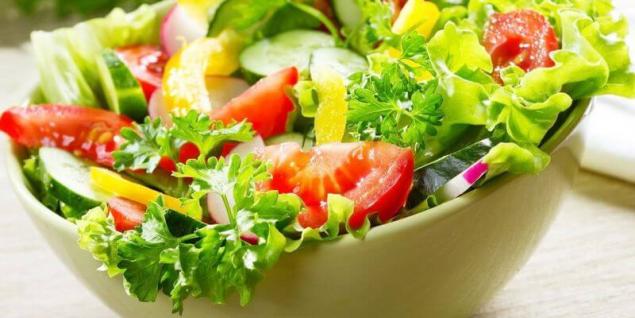
Oat products contain a lot of soluble fiber, which grabs the cholesterol in the digestive tract and removes its waste. Soluble fiber also is in beans, barley, fruits and vegetables.
Soy products such as soy sausages, vegeburger, tofu and soy milk, have two advantages. They are not only in the absence of cholesterol and a much smaller amount of fat to reproduce the taste and texture of animal products, but also have a special action, which is expressed in the reduction of cholesterol.
Garlic also lowers cholesterol. There is no need to add to your pasta or salad a whole head of garlic. In research the desired effect do just half a clove a day.
Walnuts contain a lot of fat, like all other nuts, but when consumed about three ounces a day, they lower cholesterol.
Beta-carotene, vitamin E and vitamin C protects arteries from the harm that can be caused by cholesterol. These natural antioxidants protect from dangerous chemical reactions in the body, including those that damage the walls of the arteries and lead to blockages.
Do not forget that notice beta-carotene is not difficult. It gives the orange color of carrots, sweet potatoes and pumpkin. Green leafy vegetables also contain beta-carotene, although their deep green hides it.
Vitamin E is present in whole grains, vegetables and legumes.
Vitamin C, of course, there are citrus and many other fruits and vegetables, such as broccoli and peppers.published
P. S. And remember, only by changing their consumption — together we change the world! ©
Source: www.vita.org.ru/veg/veg-health/zhen-zdrav-8.htm#6
Total cholesterol. This includes all the different types of cholesterol, put together, and this indicator measures the risk of a heart attack.

If the cholesterol level is:
– 150 mg/DL (3.9 mmol/l) or less, the risk of heart attack is very low;
– about 200 mg/DL (5.2 mmol/l) – the risk of a heart attack average;
– above 240 mg/DL (6.2 mmol/l) – risk of heart attack large.
The high density lipoprotein (HDL). It is sometimes called "good cholesterol" because it brings cholesterol from the body. The higher the HDL, the better.
To evaluate the levels of HDL, divide it by total cholesterol, and then multiply by 100 (this shows what percentage of the total cholesterol consists of HDL). Result:
– 30% or more risk of heart problems is very small;
– about 20% of the average risk;
– less than 20% of the risk above the average level.
For example, assume that total cholesterol 200 and HDL of 50. Dividing 50 by 200, we get 0,25. Multiplying the result by 100 we get the figure of 25%. Not very good, but better than average US citizens. The value is the ratio of HDL and total cholesterol.
Triglycerides. It is the particles of fat floating in the bloodstream. If the level exceeds 200 mg/DL it is considered high.
The doctor may also measure the low density lipoprotein (LDL) and lipoprotein very low density, but usually these values are not interpreted separately from total cholesterol, HDL and triglycerides.
How to use science in practice
Below we give recommendations on how to reduce cholesterol, keep it low and if You have clogged arteries is to provide them with the best opportunities for purification. Use these guidelines along with your physician's advice about diet and other therapies that may suit You.

1. Build your menu according to the four new food groups:
– whole grains such as brown rice, whole grain pasta, bread, oatmeal, cereals;
– legumes such as beans, peas, lentils;
– a variety of vegetables: broccoli, carrots, cauliflower, spinach, sweet potatoes, Swiss chard, etc.;
– fruits like apples, bananas, grapefruit, oranges, pears, strawberries, watermelons.
2. Avoid all animal products. Even chicken and fish contain fat and cholesterol, but they lack the fiber necessary for health. Ideal food for reducing cholesterol level involves a complete rejection of them.
3. Reduce the consumption of vegetable oils to a minimum. Liquid vegetable oils are better than animal fats but they still contain traces of saturated fat. Tropical oils (palm, palm kernel and coconut) saturated fats a lot. And don't use products that are made with partially or fully hydrogenated fats (you can easily find them if you read the composition of the product) because they raise cholesterol.
4. For nutrition, it is important to have a source of vitamin B12. It could be any multivitamin, enriched soy milk or cereals, or vitamin B12.
Follow these tips in the kitchen is not difficult. The most familiar and basic products meet the requirements of salads and baked beans to mashed potatoes, baked potatoes, almost all vegetables and fruits, or try vegetable lasagna, rice pilaf, spaghetti with tomato sauce, bean burritos from.
If You want to use the meat substitutes, which appeared in stores in recent years, You will find vegiburger, soy sausages, meat for sandwiches with taste the "original" version.
When choosing restaurants, look for international cuisine. Italian, Chinese, Mexican, Thai and many other cuisines offer a wide selection of healthy vegetarian dishes.
To introduce regular physical activity into daily routine is very simple. To reverse cardiovascular disease only need half-hour walk every day or hour walk three times a week.
If you want, you can replace it with any equivalent physical activity:
- Cycling,
- tennis,
- dancing,
- aerobics
- or anything that will make their hearts beat.
First of all contact the doctor to verify the readiness of the heart, joints and the whole body to physical activity and start exercise!
Food with a particular action
Some products have the unusual ability to lower cholesterol and protect the heart in other ways. Do not attempt to use them to balance the negative effects of poor nutrition – use them along with proper nutrition for added effect.

Oat products contain a lot of soluble fiber, which grabs the cholesterol in the digestive tract and removes its waste. Soluble fiber also is in beans, barley, fruits and vegetables.
Soy products such as soy sausages, vegeburger, tofu and soy milk, have two advantages. They are not only in the absence of cholesterol and a much smaller amount of fat to reproduce the taste and texture of animal products, but also have a special action, which is expressed in the reduction of cholesterol.
Garlic also lowers cholesterol. There is no need to add to your pasta or salad a whole head of garlic. In research the desired effect do just half a clove a day.
Walnuts contain a lot of fat, like all other nuts, but when consumed about three ounces a day, they lower cholesterol.
Beta-carotene, vitamin E and vitamin C protects arteries from the harm that can be caused by cholesterol. These natural antioxidants protect from dangerous chemical reactions in the body, including those that damage the walls of the arteries and lead to blockages.
Do not forget that notice beta-carotene is not difficult. It gives the orange color of carrots, sweet potatoes and pumpkin. Green leafy vegetables also contain beta-carotene, although their deep green hides it.
Vitamin E is present in whole grains, vegetables and legumes.
Vitamin C, of course, there are citrus and many other fruits and vegetables, such as broccoli and peppers.published
P. S. And remember, only by changing their consumption — together we change the world! ©
Source: www.vita.org.ru/veg/veg-health/zhen-zdrav-8.htm#6
Marietta Chudakova: People do not realize what year awaits us
To assign blame or Who is offended, and hurt...



